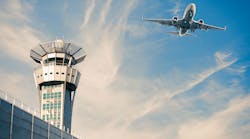U.S. aviation regulators are urging workers at airports to take extra care around the sensors on the sides of aircraft that failed in two crashes of Boeing Co. 737 Max jets since October.
So-called angle-of-attack vanes, which measure whether a plane’s nose is pointed too high relative to oncoming air to prevent dangerous aerodynamic stalls, are vulnerable to damage, the Federal Aviation Administration said in a notice.
“It is imperative that all operators are aware of the criticality of AOA sensors and the potential for damage during normal operations, maintenance procedures, servicing procedures, and any other procedures around an aircraft where damage to an AOA sensor could occur,” the FAA said in the Aug. 14 notice.
The sensors on two 737 Max jets failed, prompting a safety feature to repeatedly push down the nose on each plane. Pilots eventually were overcome and lost control of the planes in spite of procedures to disable the malfunctioning system. A total of 346 people died in the crashes and the plane has been grounded worldwide since March 13.
The FAA notice was sent as a safety “reminder” and isn’t connected to any specific findings from the multiple investigations into the accidents, the agency said in a statement.
A Bloomberg review of public databases found at least 140 instances since the early 1990s of angle-of-attack sensors being damaged on the ground or by birds. Even though the failures occurred on different models, they sometimes prompted serious cockpit emergencies like what occurred in the 737 Max accidents.



